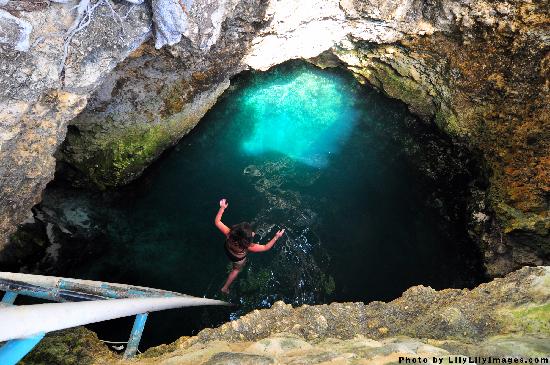
Some older Jamaicans regard Milk River in Clarendon and Bath in St. Thomas with special reverence. My parents certainly did. They spoke in hushed tones of the mysterious effects the water in each location has on the human body, how it relieves aches and pains, eases the effects of rheumatism and rejuvenates the body. They spoke of how special their own trip to Milk River was.
So it was with high expectations my wife and I, as part of our honeymoon excursions through parts of the island, went to Milk River back in 1989. How disappointed we were. We expected much better facilities. I mistakenly believed we would wade in an actual stream surrounded by nature. But more terrifyingly, while we were in one of the indoor baths, a crab decided to join us, scaring my wife.
But people, both local and from overseas, swear by the medicinal effects of the waters from these hot springs. Facilities out at Rockfort in Kingston were improved to allow for more commodious bathing, joining Milk River and Bath as the three main mineral springs in the country.
I was surprised, while searching through various sources on Jamaica’s cultural history that there are actually quite a number of hot springs in the country that were frequented by residents, way back in the past.
“There are many mineral springs in Jamaica, most of them possessing valuable qualities for the cure of various diseases and infirmities of the body,” the 1900 edition of the Handbook of Jamaica recounts. After mentioning “the hot sulphurous spring at Bath” and “the warm salt spring at Milk River,” the Handbook spoke of “the Spa Spring, or Jamaica Spa…at Silver Hill in St. Andrew”; “St. Faith in the district of St. John”; “a remarkable spring at Moffat, on the White River, a tributary of the Negro River in the Blue Mountain Valley”; and “the spring at Windsor, near St. Ann’s Bay.”
In addition, there were the “wann springs at Garbrand Hall on the east branch of the Morant River and on the Adam’s River, near the Blue Mountain Ridge in the parish of St. Thomas, and on the Guava River in Portland”; one “near the source of the Cabaritta River in Hanover”; “the well known spring at New Brighton, in St. Catherine”; “a mineral spring…on the sea edge at Manatee Bay, also in St. Catherine, and one at Rock Fort in the parish of Kingston.”
Also, “another possessing some qualities of importance is to be found at Golden Vale in Portland; and there are salt springs near the Ferry on the Kingston and Spanish Town road, and at Salt River in Vere; and in many other localities salt-water springs are found and some impregnated with soda or other alkalies.”
I’d be interested to learn from readers of personal knowledge or experiences of these less well known mineral springs in the country. Surely, persons who live in or who are from these parts must know something of these springs.
We learned some details about a number of the hot springs. “The spring at Bath in the parish of St. Thomas has a temperature at the fountain head of 126° to 128° F., but the water loses about 9 degrees of heat in its transit to the bath.” The waters “are not purgative and are beneficial in gout, rheumatism, gravelly complaints, cutaneous affections and fevers.”
In the late 19th century, the waters at Bath were analyzed and discovered to contain high concentrations of chloride of sodium as well as silica, chloride of potassium, sulphate of calcium, sulphate of soda and carbonate of soda. Some good reader would, hopefully, point out the medicinal significance of these.
With regard to Milk River:
The bath at Milk River in the district of Vere is one of the most remarkable in the world. It is a warm, saline, purgative bath; the temperature is 92° F. It is particularly efficacious in the cure of gout, rheumatism, paralysis and neuralgia; also in cases of disordered liver and spleen. Some wonderful results are on record, and it is believed that if the beneficial effects of these waters were more generally known in Europe and America a large number of sufferers would be attracted to them. The buildings are extensive; and comfortable accommodation at a moderate charge can now be obtained by visitors.
The Spa Spring at Silver Hall seemed to have fallen into disuse pretty early. It “was formerly maintained as a Government Institution and extensive buildings once existed there, but they have long since gone to decay and the spring is neglected.” This despite the notion that the “waters are chalybeate, aerated, cold, tonic; beneficial in most cases of debility, particularly after fever, dropsy and stomach complaints.”
We read that the spring at Windsor in St. Ann “was once brought into considerable prominence in consequence of some remarkable cures effected by its use. People from all parts of the island visited it and the water was carried away to great distances. It is still a favourite among the peasantry, and it is said to possess wonderful powers in healing ulcers, etc.” I grew up in St. Ann and I cannot recall ever hearing of a mineral spring in the parish.
One wonders what has happened to these other hot springs. If there are so many mineral springs in Jamaica, why hasn’t the country made more use of them as visitor attractions?